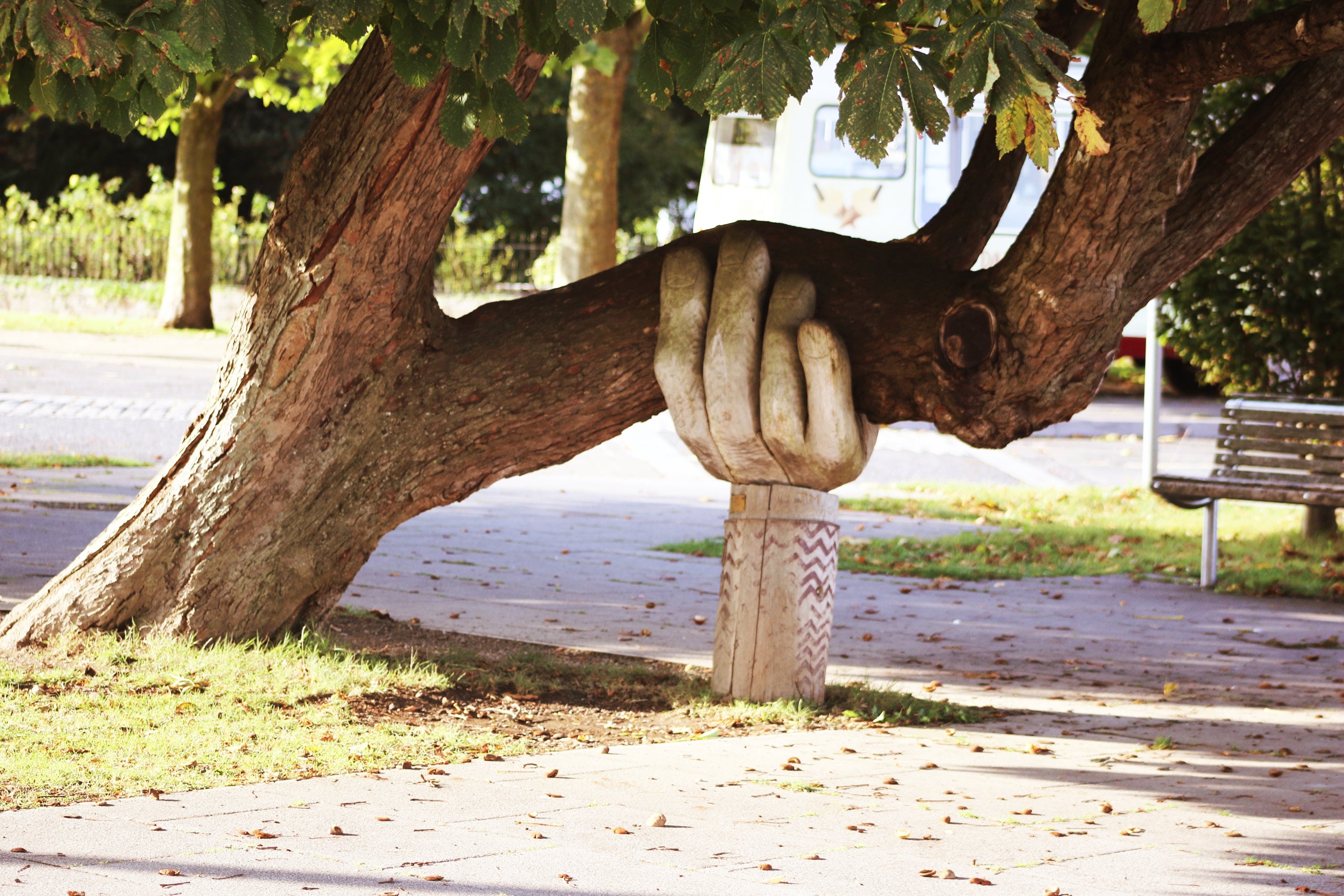This week many people in the UK are thinking of the two slain Manchester policewomen, as the two murder victims, PC Fiona Bone and her colleague PC Nicola Hughes were laid to rest. Their funeral cortèges on Wednesday and Thursday in Manchester made a path amongst crowds of the public standing side by side with police in hushed respect.
A recent trending hashtag, part of the coverage, caught my eye when it first appeared. It touched my heart and piqued my curiosity. #coverforGMP (the hashtag broadcast to police personnel for volunteers to stand in so that GMPolice could attend their colleagues’ funerals) was hugely successful and made a big impact in what were already emotionally-charged days.
But since when did the UK police start recruiting for cover via social media? I started some research into the relationship between the public, the police, and social media.
How did it begin?
The first links between the UK police and social media started back in 2008, when some forces started experimenting. Firstly this was at an unofficial level, with initiatives by individual officers and then with varying degrees of official support, including the eventual sponsorship of the Association of Chief Police Officers (ACPO). Police websites generally use YouTube and Flickr to publish videos and photographs, and many have Facebook pages. Increasingly, forces are hosting webcast meetings, sometimes simultaneously in a physical location and online. Now there are around 1,000 approved police Twitter accounts, who operate from force-accredited accounts with the approval of their senior officers. Of course others, like Constable Chaos above, tweet anonymously under pseudonyms.
How is social media being used by the police?
- Intelligence gathering – notably during situations like the London riots, but also for other real-time information from the public on emergencies like traffic accidents or floods.
- Dissemination of local information – the police can use their social networks to put of messages and links to inform and safeguard the public
- Engagement with local communities, supporting the police approach to neighbourhood policing
towards the delivery of community policing, transparency, interaction etc which was designed to reassure and boost public confidence in the police. - Knowledge and best practice sharing within policing organizations, notably through POLKA, the Police Online Learning Learning Knowledge Area, provided by the National Policing Improvement Agency.
Twitter is the most visible and easily measurable social medium, and arguably the most effective when it come to broadcast and response, so for the rest of this article I shall be concentrating on the police use of Twitter accounts.
Landmark use of Twitter by police:
GMP24: On October 14–15, 2010, the Greater Manchester Police (@GMPolice) published a tweet about every incident (and that was over three thousand of them) notified to their control room over a 24-hour period, using the identities @gmp24_1, @gmp24_2, and @gmp24_3, and the hashtag #gmp24. By the end of the exercise, the number of followers of GMP’s Twitter account had increased from 3,000 to 17,000. The idea behind it, according to their Chief Constable, was to “raise awareness of the diverse and complex role of policing, explaining how much time officers spend with non-crime matter”.
UK Riots: The other most notable use of social media by the police was during the riots of August 2011. Social media was crucial to development, communication and resolution of the riots: by August 10th, tweets using the hashtag #ukriots were being created at the rate of hundreds per minute. Twitter and other social networks provided the public with localized information; police forces used Twitter to make public service announcements, dispel rumours, inform and reassure the public. Evidence from social media was used to track down and prosecute looters.
The Home Affairs Committee report into the riots examined the impact of social media, and found the police to have used the media well, but monitoring and analysing social output was new to many forces, and the situation had highlighted the need for each force to have a social media communications plan in place.
What guidelines to the police for the use of social media have been issued?
In 2010, The National Police Improvement Agency (NPIA) issued Engage; Digital and Social Media Involvement to the UK police forces. It remains a valuable guide to the recommended use of social media by the police. NPIA’s guidance advises forces to adopt seven principles for effective communication. These are to be credible, consistent, responsive, inclusive, ethical, and personable, and for the police service user to be an ambassador for the force and the service.
“Good use of social media can help the police to better understand, respond to and attract the attention of specific audiences. Used in the right way by the organisation, social media enables real two-way communication with people interested in engaging with the police.”
The guidance claims that social media can enhance the reputation and accessibility of staff to their communities, communicate with the communities they serve, provide opportunities for increased public engagement, gauge the impact of police and partnership activity in tackling issues affecting the community, and serve as a channel to seek views from community members on issues affecting them. Police officers are encouraged to be interesting and engaging in their use of social media in order to stimulate interaction. The Thames Valley Police guidance, for example, suggests advertising the use of social media through conventional channels, using Twitter to engage in dialogue, not just to tell people what’s happening, but also to respond to specific questions, making sure tweets are interesting and relevant and making the experience interactive for followers by including links to pictures, videos, and community stories. There is also a suggestion that the way to be engaging is by using slightly more informal language than usual (while remaining professional), to tweet between three and six times a day, retweet interesting local material, and link up with local partners, including hyperlocal sites, schools, and residents.
Do the UK police enforce social media policies?
In 2011 thirty forces provided a copy of their social networking policy or guidance to Her Majesty’s Inspectorate of Constabulary (HMIC), the independent police watchdog body, who found:
“There is inconsistency in terms of the type and level of detail in these documents. Officers and staff, and staff association representatives, expressed a desire for greater clarity on what is acceptable behaviour online.
“The monitoring of staff social networking sites usage is sporadic and, as with other integrity issues, it is often reactive rather than proactive.
“There is evidence of relationships, or at least dialogues, being facilitated through social networking sites between officers and journalists from the national media. This is a growing aspect of the relationship between the police and the media (local and national) which further highlights the need for clarity on the boundaries for what is appropriate.”
Certainly, yesterday’s report in The Guardian about the closure of police Twitter accounts indicates that more training is needed. The paper sites recent cases in Devon and Cornwall, West Midlands and Northamptonshire where officers have been reprimanded and their accounts closed down because of ill-advised tweets, some possibly in breach of the Data Protection Act.
“We expect the highest standards from our officers and staff at all times and this is reflected in procedures regarding the use of social media across the force. This may be with regard to data protection, appropriateness of message and for investigative or legal reasons. We monitor the use of social media and at times it is necessary to ask for messages to be removed, adapted or indeed for an account to be closed.” said Northamptonshire police in a statement.
In the case of the West Midlands police, some sources have said that the officer was disciplined for tweeting the #coverforgmp hashtag (although that’s been denied by the force, who said it was for posting images of a confiscated weapon). To my relief, the officer seems unlikely to have been @ConstableChaos, who tweeted an outstanding commentary to the funerals.
The HMIC, which highlighted the issues to the Northamptonshire force, seem perhaps a little at odds in their treatment of inappropriate tweeters from DCC Gordon Scobbie, who speaks for the police on social media.
Interviewed in the Guardian this week, Scobbie was keen to promote the idea of trust between the forces and their tweeters, and opposed to the idea of heavy-handed disciplinary action. He views social media as a tool for openness and transparency.
“If there are officers who are saying things which are critical then we need to engage with them and look at the allegations they are making, and turn it into a constructive dialogue,” he said. “If you are too prescriptive and controlling, you are in danger of driving the whole thing underground and you will get individuals just attacking everything from internal spoof accounts.”
In contrast, the HMIC’s 2011 report into the relationship between the police and the media Without fear or favour, says:
“Forces are aware that the increased use of social network sites (such as Facebook and Twitter) by staff represents a relatively new source of information for the media. There is little guidance on what may or may not be appropriate to include in social media messaging. Any lack of clarity felt by staff is not helped by the example set by some senior officers who include what might be considered questionable force-related content or personal opinion in their own messaging.”
What can go wrong?
1. Inappropriate tweets.
Perhaps the most likely danger. NPIA advises that information posted online should not:
- Contain protectively marked or otherwise sensitive information
- Discriminate on any grounds, or appear to support discriminatory attitudes
- Be libellous
- Breach copyright
- Undermine operational activities
- Damage the reputation of the police service
… but that’s really just skimming the surface of the need for social media policy, legal, communications and crisis training. Deciding what does and does not breach these requirements takes a lot of experience and training (we know, we do this for a living).
To see how it can easily go wrong in the heat of the moment, back to the riots again. @GMPolice were hauled over the coals for this comment on the sentencing of a woman convicted of accepted a looted pair of shorts (whose sentence was later commuted to community service on appeal).
The ill-advised tweet provoked much reaction:
I’ve read unsubstantiated reports too, of a tweet from the same force which gave the home address of a man charged with arson during the riots. He was subsequently cleared – but not before a presumed revenge attack had burnt his flat out.
The DMIC report highlights the risk of information disclosure and its legal and reputational consequences. Their research amongst 40 UK police forces showed the growth of social media disclosures:
2. The public reporting crime via Twitter – all the accounts I looked at warned the public not to do this, but it does of course remain a risk, and accounts need to be monitored 24/7. Not such a problem with an police force account serviced by a team, but more difficult for the private account of a community policeman.
3. Hijacked and fake accounts – security is incredibly important, as is the Twitter accreditation – though of course not all members of the public know to check for this. What if an officer loses their smartphone, logged in to an account? What are the security protocols in place for mobile use and for shared accounts? The NPIA guidance warns at the topmost level of password strength, phishing, and secure websites. However there was, for example, no mention of not sharing log in details, sending them via email or storing passwords on a mobile device, all of which very basic security measures to follow. One can only hope that there are more detailed briefings on security within each force.
4. Unanswered tweets – as above, in regards to emergency tweets. Some Twitter accounts are broadcast only, and don’t engage, but they should clearly advise followers not to expect a response if this is the case. Of the four accounts reviewed by Ben Proctor, the best account information was on @GMPolice’s Twitter page, which set clear expectations as to when the account is monitored, further social media spaces and what to do in an emergency / non-emergency.
5. Inconsistency – differing voices, approaches and content in a group-managed account
6. Tumbleweed accounts – apparently, there are scores of Police Twitter Accounts which have ground to a halt, and others, like @strathpole65, which never even got started.
7. Unofficial accounts. @ConstableChaos is clearly benign, and genuine, if not officially sanctioned. But what kind of monitoring and social media policies exist for the boys and girls in blue? The scope for ill-advised if not actually rogue communication is immense, as DCC Scobbie warned.
The diversity of Police accounts: a selection
I have to start with the Greater Manchester Police aka @gmpolice, the force in which the murdered policewomen served. Always at the vanguard of the social media police, @GMPolice have one of the largest followings at over 110 K. They also have many other social media presences: besides the customary Facebook page (with 28K likes), they have a well-kept Flickr account and a YouTube channel (on which they have sensibly disabled comments on some videos for fear of prejudicing sub-judice cases). They’ve even recently launched a surprising busy and visually engaging Pinterest profile.
The competence of their social media handling can be seen in the treatment of the recent tragic deaths. Communications have been handled sensitively and with dignity. In this video GM Police’s Assistant Chief Constable turns to YouTube to help co-ordinate the #coverforgmp efforts. GM Police have even opened an online Book of Condolence to allow the public to leave messages of respect for the policewomen’s families, friends and colleagues, put up this YouTube tribute and set up a Flickr gallery.
PC Ed Rogerson aka @hotelalpha9. A great example of small scale community policing, using Twitter to reach out, respond to queries,broadcast news and engage in chat with his followers. He wants to reassure his residents that he’s working on their behalf, even if they can’t see him, and give them a much greater access to his services.
Smithy WMP aka @WMPcsidogsmithy. Yep, he’s a dog. Not a hugely prolific tweeter – well, it’s hard with paws – but nevertheless, he shows the force’s human side (as it were), in addition to fundraising and informing the public about the role of dogs in the emergency and caring services
West Midlands Police aka @wmpolice: A broadcast-only channel with a warm engaging tone giving out news of interest to its local community.
As I mentioned above, Gordon Scobbie, aka @GScobbie, is the social media spokesman for the police, with a following of over 4,600. He tweets with ease, charm and surprising transparency. (Possibly too informally for the HMIC?)
Sussex Police have been using social media for a couple of years. I found the mix of voices and subjects engaging: it gives a real perspective on the different roles, locations tasks and personalities within the force.
Sussex Police Authority also broadcast webcasts of their live council meetings, and invite participation from the public via polls and surveys.
… and finally, back to the origin of this post, the recently nick-named Constable ‘Pleb’ Chaos aka @ConstableChaos. An anonymous unofficial Tweet, Blog and Facebook account belonging to an “overworked overstretched member of Her Majesty’s Constabulary”. All views his own.
In conclusion
On balance, the partnership between the UK Police and social media seems a happy one, albeit a work still very much in progress. I know there are subjects I haven’t touched upon here, such as the legitimacy of using social media for evidence-gathering, but that wasn’t really my concern for this article.
Social media seems to provide an essential conduit between the police and public. As a reflection of the world around them, police need to communicate with the public with a greater frequency, speed, and informality. People want to hear from, and talk to the police wherever they are, in a way which suits them. In all reality, it’s doubtful that the use of social media in policing could be stopped in any case, as Gordon Scobie noted.
However, what the Police Forces need to do now is implement best practice from the rest of the public and private sector. Develop a central social media policy which all forces can agree and sign up to, and which can be adapted to meet the changing technical landscape. Maintain consistent training across the forces – legal, communication and social media crisis training. Investigate and implement continual monitoring of police accounts. Ensure they have adequate security safeguards. Give frequent refresher training. And most importantly of all, never miss a chance to learn from each other’s mistakes and successes.





